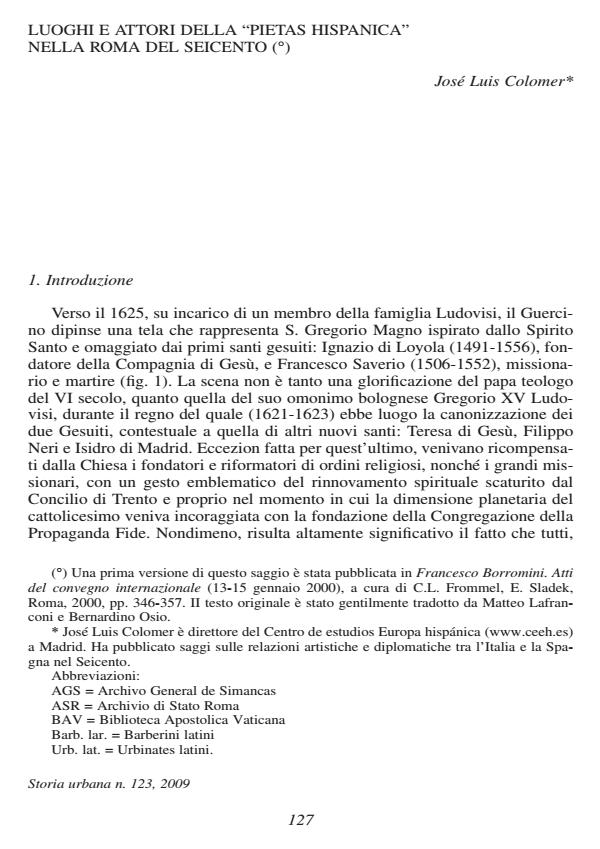Luoghi e attori della "pietas hispanica" nella Roma del Seicento
Titolo Rivista STORIA URBANA
Autori/Curatori José Luis Colomer
Anno di pubblicazione 2009 Fascicolo 2009/123
Lingua Italiano Numero pagine 22 P. 127-148 Dimensione file 8393 KB
DOI 10.3280/SU2009-123006
Il DOI è il codice a barre della proprietà intellettuale: per saperne di più
clicca qui
Qui sotto puoi vedere in anteprima la prima pagina di questo articolo.
Se questo articolo ti interessa, lo puoi acquistare (e scaricare in formato pdf) seguendo le facili indicazioni per acquistare il download credit. Acquista Download Credits per scaricare questo Articolo in formato PDF

FrancoAngeli è membro della Publishers International Linking Association, Inc (PILA)associazione indipendente e non profit per facilitare (attraverso i servizi tecnologici implementati da CrossRef.org) l’accesso degli studiosi ai contenuti digitali nelle pubblicazioni professionali e scientifiche
Luoghi e attori della "pietas hispanica" nella Roma del Seicento - Places and actors of "pietas hispanica" in baroque Rome Along all the 17th century Rome represented for the Spanish monarchy an ideal scenario where to show the signs of a piety, which first aim, behind the religious purpose, was the affirmation of Spanish primacy within the Catholicism. All the iconographies prepared in Rome to celebrate some major events of Spanish monarchy, as the canonizations of Spanish saints or the deaths of Spanish kings, were part of a strategy to assert in the site of pontifical power the image of the Spanish monarchy as an advocate of Catholicism. In this way Rome became the space to play strategies, among holy and profane, in which had a relevant role a number of works of art, permanent or ephemeral, marks of the Spanish presence in the town.
José Luis Colomer, Luoghi e attori della "pietas hispanica" nella Roma del Seicento in "STORIA URBANA " 123/2009, pp 127-148, DOI: 10.3280/SU2009-123006